With Italy’s iconic Etna volcano erupting at the beginning of the year, followed by the lava flows of La Palma making headlines for weeks in autumn, then activity starting at Hunga Tonga-Hunga Ha’apai in late December, it felt like 2021 was a particularly big year for the planet’s volcanoes.
When we look at the statistics, however, we see that this level of volcanic activity is nothing special. In 2021, 80 eruptions occurred at 75 volcanoes, with 32 new eruptions recorded. This is pretty much par for the course, and looking at the year-on-year figures for the past few decades, there is no indication that volcanic activity is increasing.
Still, the volcanoes of 2021 seemed to capture the attention of the world’s media, and blew our minds at a time when much of the world was still reeling in the aftermath of the COVID pandemic, reminding us once again of the awesome power of nature.
Read more about volcanoes:
- What would happen if all volcanoes on Earth erupted at once?
- Volcanoes may have given dinosaur evolution a helping hand
- 5 interesting facts about volcanoes to shake up what you know about them
Mount Etna, Italy
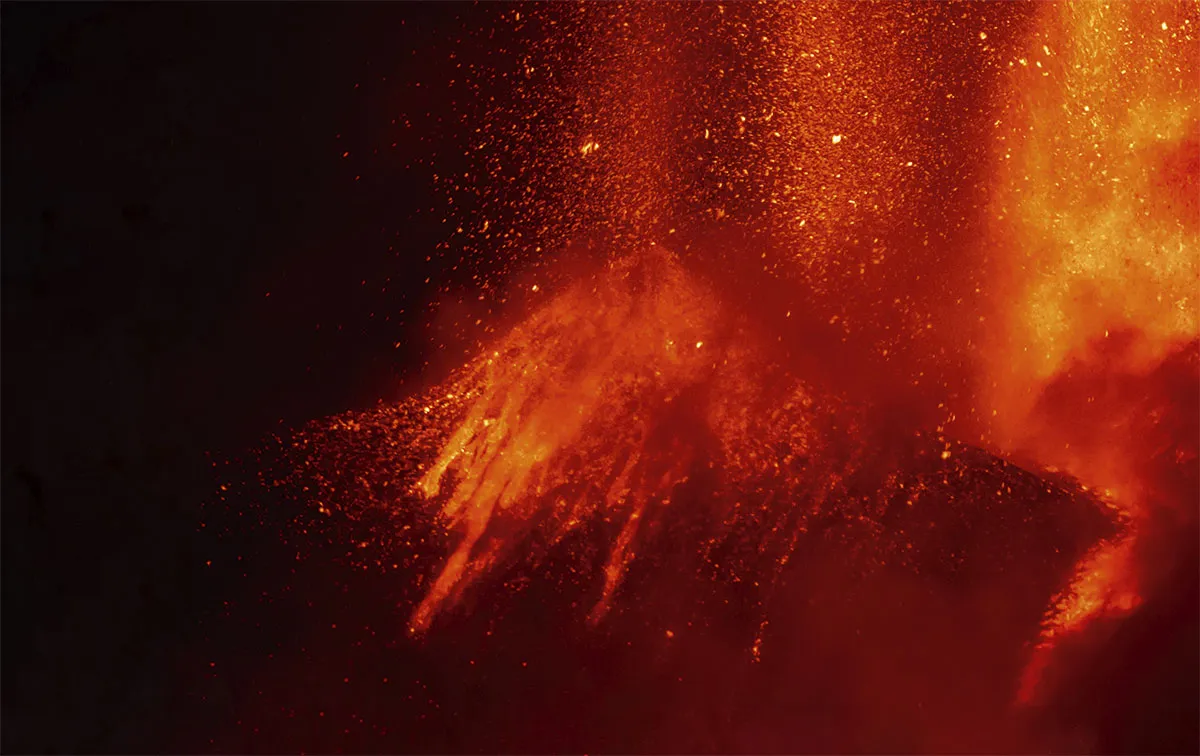
Something is always happening at Sicily’s Mount Etna, and 2021 was no different. Etna demonstrates two different types of activity: ash explosions and overspilling lava flows from one or more of the four summit craters, and larger volume lava flows lower down on the flanks.
During 2021, the action was all at the summit, where spectacular lava fountains up to a kilometre high often lit up the sky over eastern Sicily. Periodically, more violent blasts launched huge columns of gas and debris high into the stratosphere, deluging surrounding communities in ash, and closing Catania airport at the foot of the volcano on a number of occasions.
Etna’s eruptions have certainly become more violent in recent years, and there may be further activity in 2022.
Fagradalsfjall, Iceland
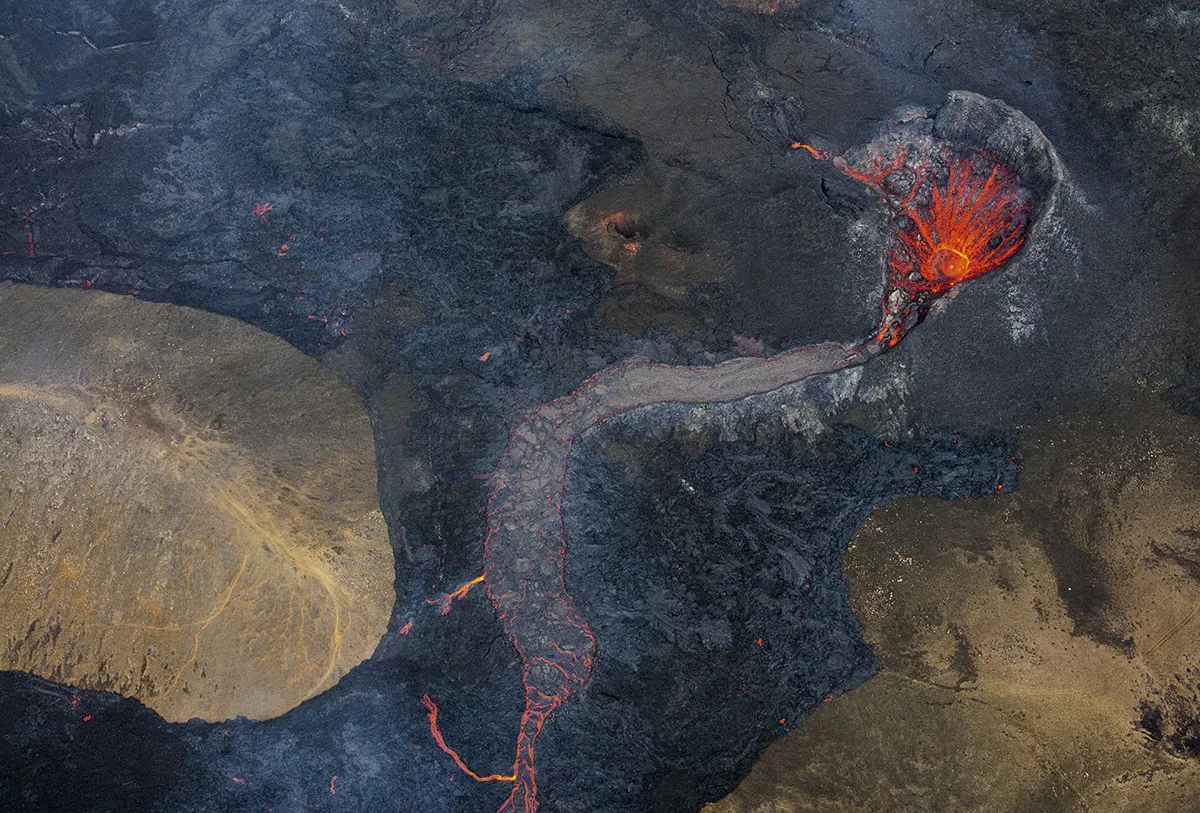
An eruption in Iceland is hardly news, but this one was different. For the first time in more than 800 years, lava was flowing once again on the Reykjanes Peninsula. Following a period of unrest, lava reached the surface in mid-March 2021, via a system of new fissures.
Activity soon became focused at one point, rapidly building a cone that reached a height of more than 330 metres in just nine months. The eruption site became a magnet for tourists, but Reykjavik residents did not need to travel, as jets of magma more than 300 metres high could be seen from the capital 60 kilometres away.
The eruption eventually ended in September after 181 days, but the return of activity to this part of the island suggests that more eruptions could be on the way in due course.
Semeru, Indonesia
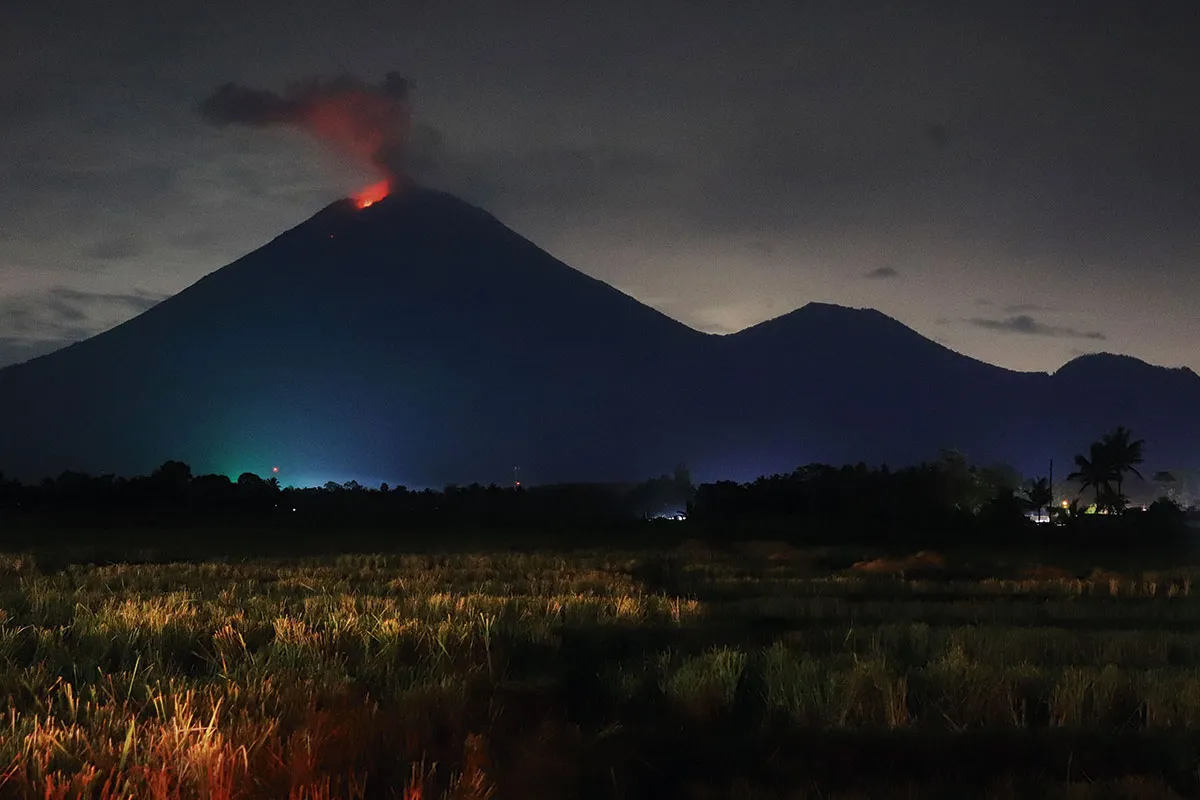
Located in southern Java, Semeru is an archetypal, steep-sided, volcanic cone, beloved of tourists and hikers alike. It is also very dangerous. Semeru’s eruptions tend to be moderately explosive rather than huge, but often lead to loss of life.
The volcano has been almost continuously active since 1967, the latest outburst beginning in early December 2021, when heavy rains contributed to the collapse of the summit lava dome. This triggered an explosive eruption that sent a column of ash and debris to a height of more than 12 kilometres, and fed pyroclastic flows and mudflows.
Travelling at speed down the flanks, these soon reached the villages at the foot of the volcano. Similar activity continued over the following month or so, leading to the destruction of 5,200 buildings, causing more than 70 deaths, and displacing in excess of 10,000 people. Semeru continues to be active as of February 2022.
Kilauea, Hawaii
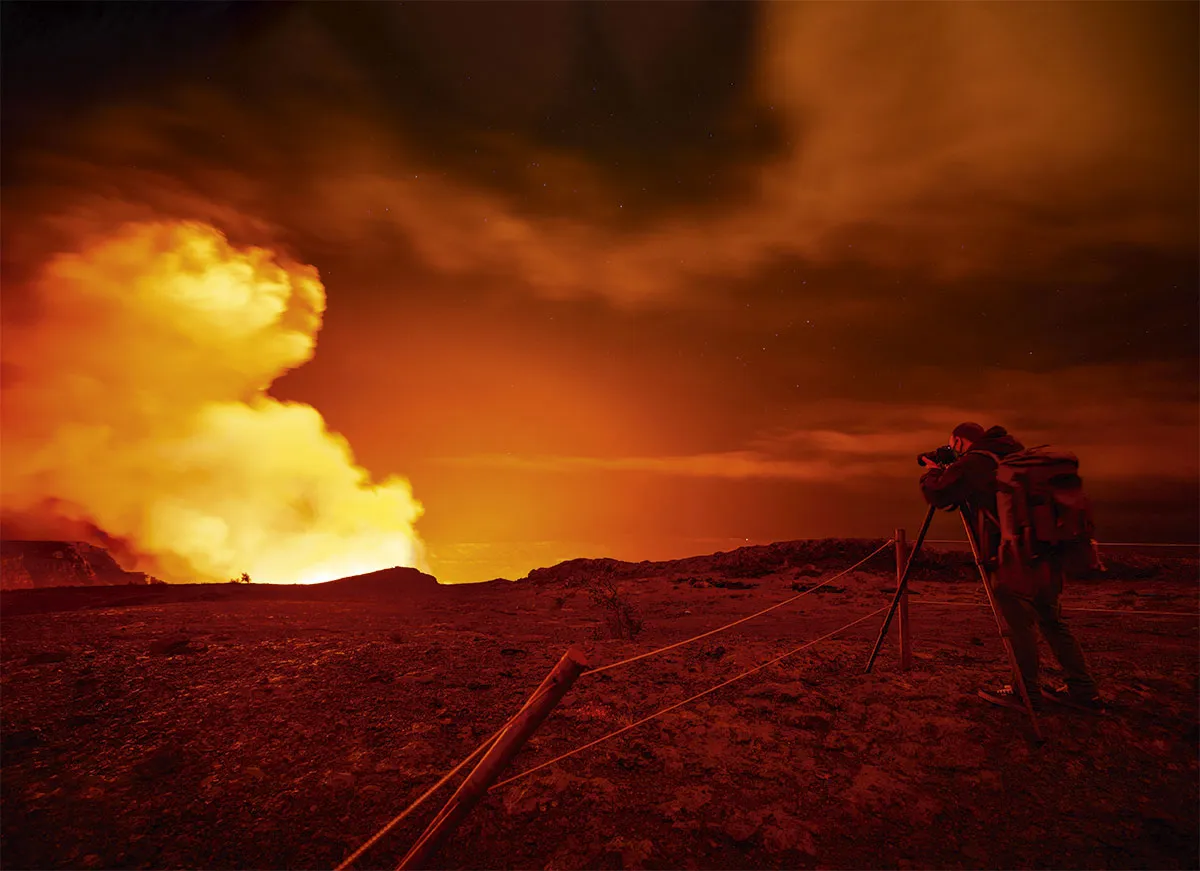
If you are determined to see flowing lava, Kilauea in Hawaii is your best bet. Between 1983 and 2018 the volcano was in almost continuous eruption, spewing out lava that covered more than 100 square kilometres, buried nearly 800 homes, and remodelled the coastline.
After a short pause, a new eruption began in December 2020 at the summit’s Halema’uma’u crater. Active vents in the crater floor began to fill it with lava, so that by the end of February 2021, the crater was occupied by a huge lake of churning lava more than 200 metres deep.
Things quietened down after May, but a new eruption began in September 2021, when new fissures opened within the crater, feeding fountains of lava that reached heights of more than 60 metres. As the level of lava in the crater rose, all but one of the vents became submerged, leaving a single vent to continue to ooze lava.
Soufrière, St Vincent
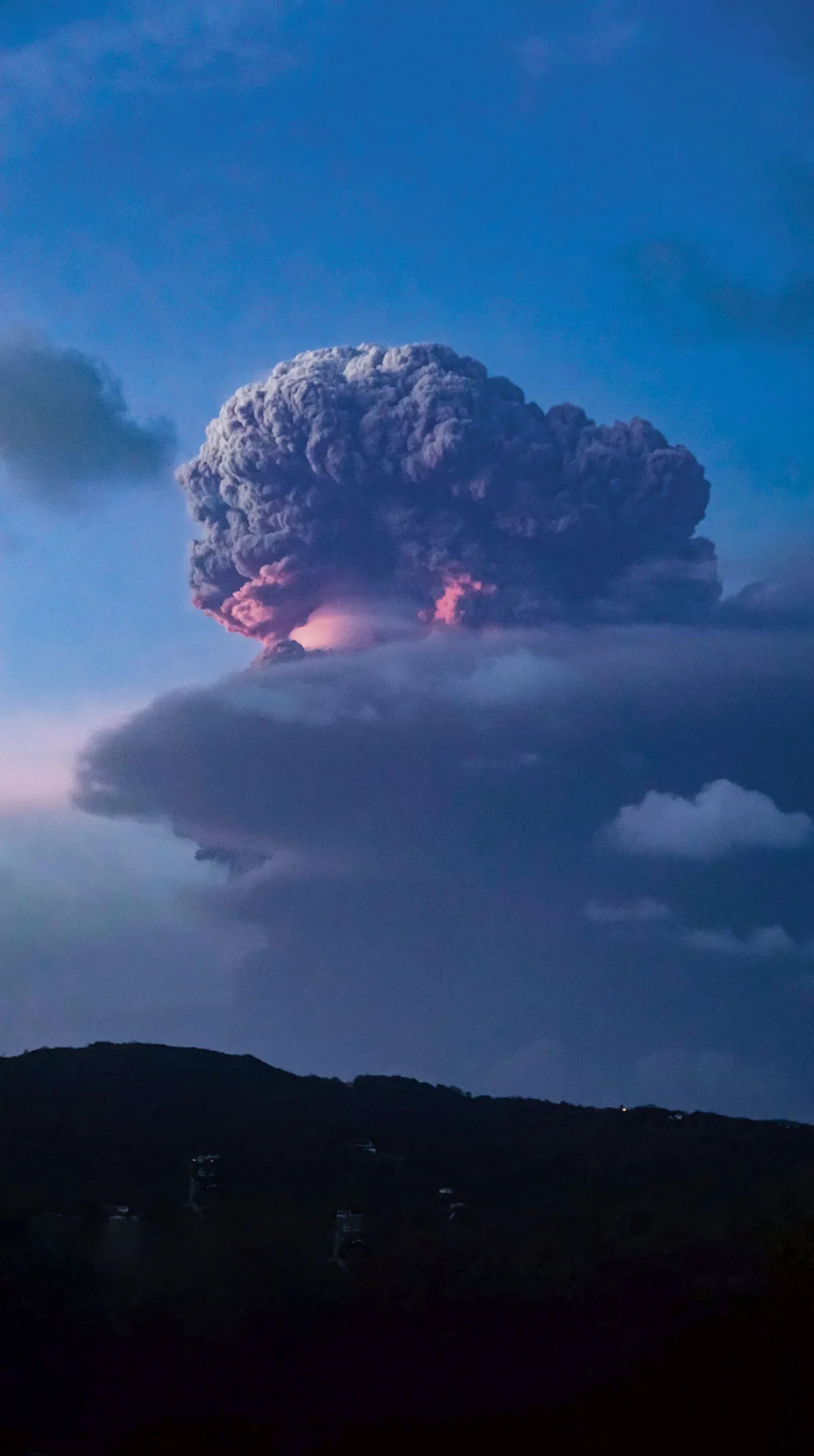
Eruptions of St Vincent’s Soufrière volcano can be deadly. In 1902, a major blast killed close to 1,700 people, but when a smaller eruption began in 1979, the authorities were better prepared, and timely evacuation meant that there were no deaths.
Following more than four decades of quiet, a new eruption began just after Christmas 2020. In early April 2021, a violent explosion obliterated a colossal lava dome that had grown over the previous three months, launching an eight-kilometre-high eruption column that dumped ash across the island and closed the airport on neighbouring Barbados.
Big explosions continued over the next few weeks, feeding pyroclastic flows and mudflows, before activity died down at the end of the month. The eruption was as big as that of 1902, and could have been similarly lethal, if not for the fact that more than 16,000 people were evacuated from the highest risk areas.
Hunga Tonga-Hunga Ha’apai, Tonga

Prior to December 2021, the only visible bits of this submarine volcano were the tiny islands of Hunga Tonga and Hunga Ha’apai. Soon, even these were gone. Towards the end of the month, violent explosions tore the islands apart and dumped ash across the Tonga archipelago.
The eruption climaxed on 15 January 2022, when a colossal detonation, likely caused by the mixing of magma and seawater, spawned shock waves that circled the planet four times, and was heard as far afield as Alaska, 6,000 kilometres away. A series of tsunamis followed, which reached heights of 15 metres on some islands, and crossed the Pacific to take two lives in Peru.
Because of eruption damage to an undersea cable, communication with Tonga remains poor, and it may be some time before the true extent of the damage is known.
Nyiragongo, DRC
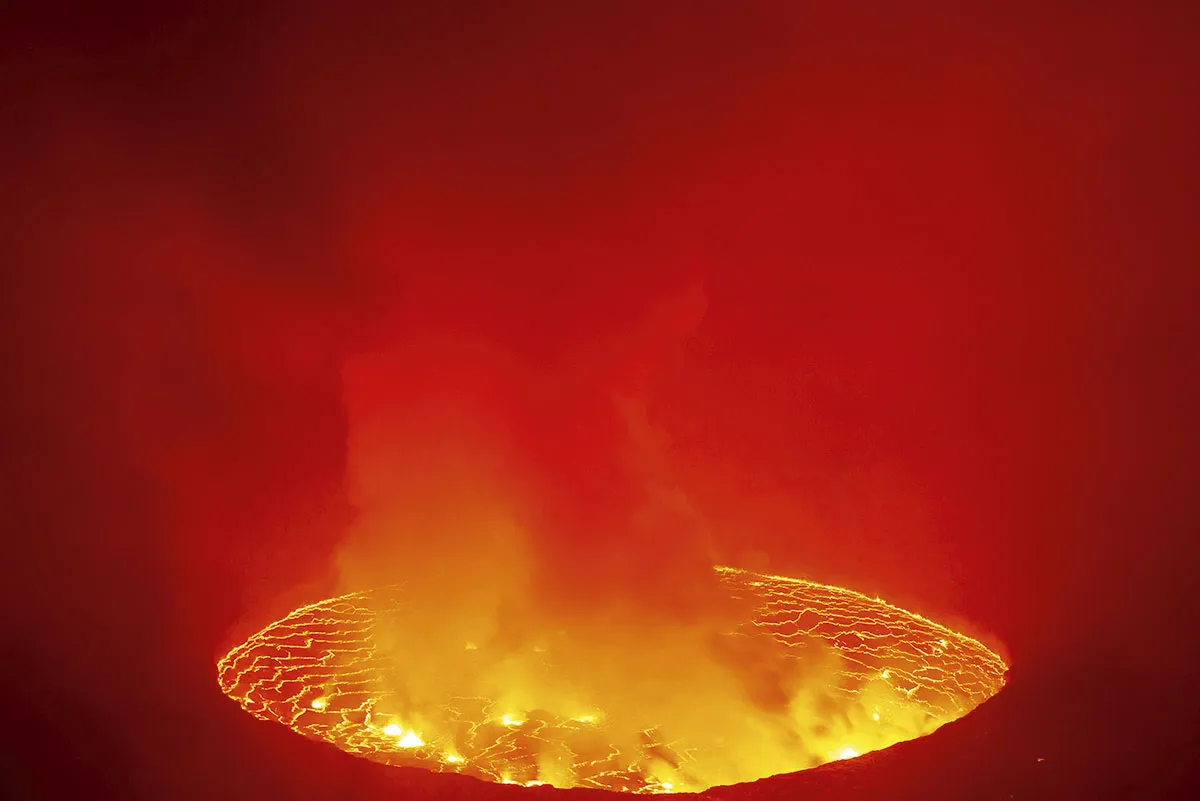
Nyiragongo is an impressive volcano, having a kilometre-wide summit crater filled by a lava lake that periodically drains, feeding lava flows that often threaten the neighbouring city of Goma. In 2002, such an eruption destroyed several thousand homes and led to the evacuation of a quarter of a million residents.
The 2021 eruption began in May and followed a similar path. Drainage of the lava lake coincided with the opening of fissures low down on the volcano’s south flank, from which rapidly flowing lava issued. Within hours, the flows had reached the northern outskirts of Goma, leading – ultimately – to the destruction of more than 3,500 homes and the displacement of 20,000 people.
Lava production stopped after a couple of days, but strong earthquakes followed, accompanied by the opening up of ground cracks in the city itself. With a new lava lake growing, the stage is already being set for the next eruption.
Taal, Philippines
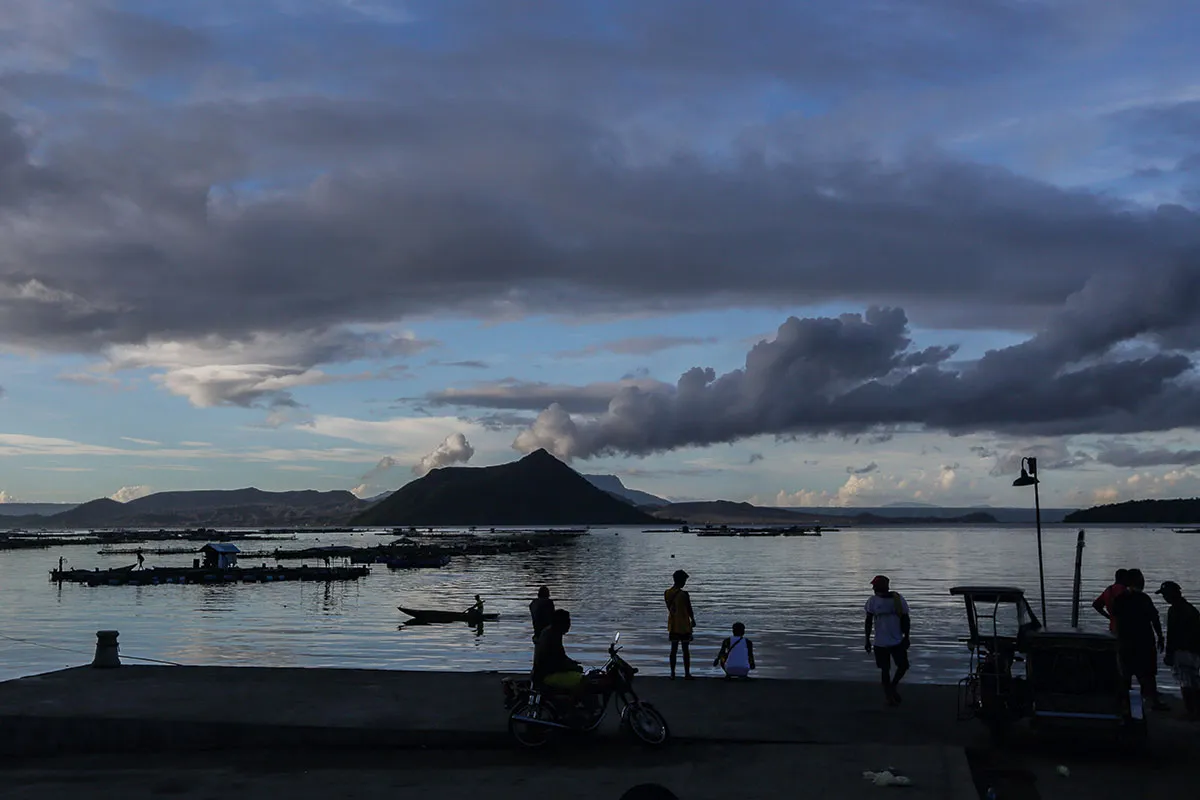
The active cone of Taal volcano is pretty much unique in that it forms a low-lying island – known as Volcano Island – at the centre of a huge lake-filled crater formed by a mega-blast during prehistoric times.
As such, it presents a unique set of hazards, most notably surges of boiling water, gas and ash that scoot across the lake surface before crashing into the shore. More than 1,000 lives were lost to such surges in 1911, and a further 100 or so in the 1965 eruption, which obliterated villages around the lake edge.
The latest eruption began in January 2020, when a violent blast dumped ash across Manila, the capital of the Philippines, and then erupted again in July 2021. Since then, it has continued to periodically blast out clouds of ash and steam, and to generate a sulphurous volcanic fog (known as vog), causing health problems for the local inhabitants.
Fukutoku-Oka-no-Ba, Japan
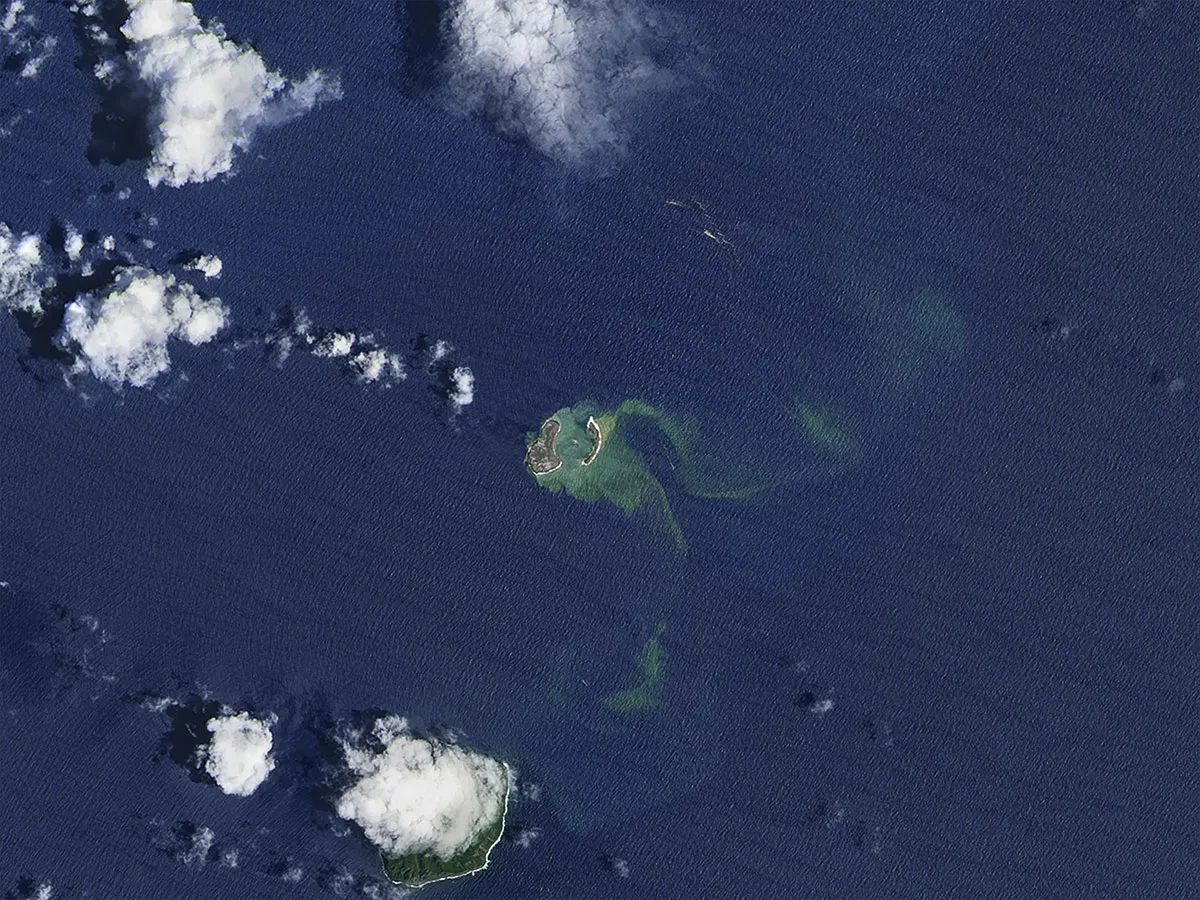
Hidden away in the Bonin Islands, 1,500 kilometres south of Tokyo, the existence of this submarine volcano has barely impinged upon most people’s radars – even those of most volcanologists. Fukutoku is something of a now-you-see-it, now-you-don’t volcano, at times taking the form of a small island, at others marked only by a patch of discoloured water.
Half a dozen small eruptions were recorded in the first decade of the century, but the volcano had been quiet before waking with a bang in August 2021. The colossal 16-kilometre-high column of ash blasted into the atmosphere was impossible to ignore, as were the immense rafts of pumice that covered the surface of the sea near the eruption site. Seemingly nothing more than a curiosity at first, the pumice rafts reached the Japanese mainland a couple of months later, clogging harbours, contaminating fisheries and damaging hundreds of vessels.
La Palma, Canary Islands
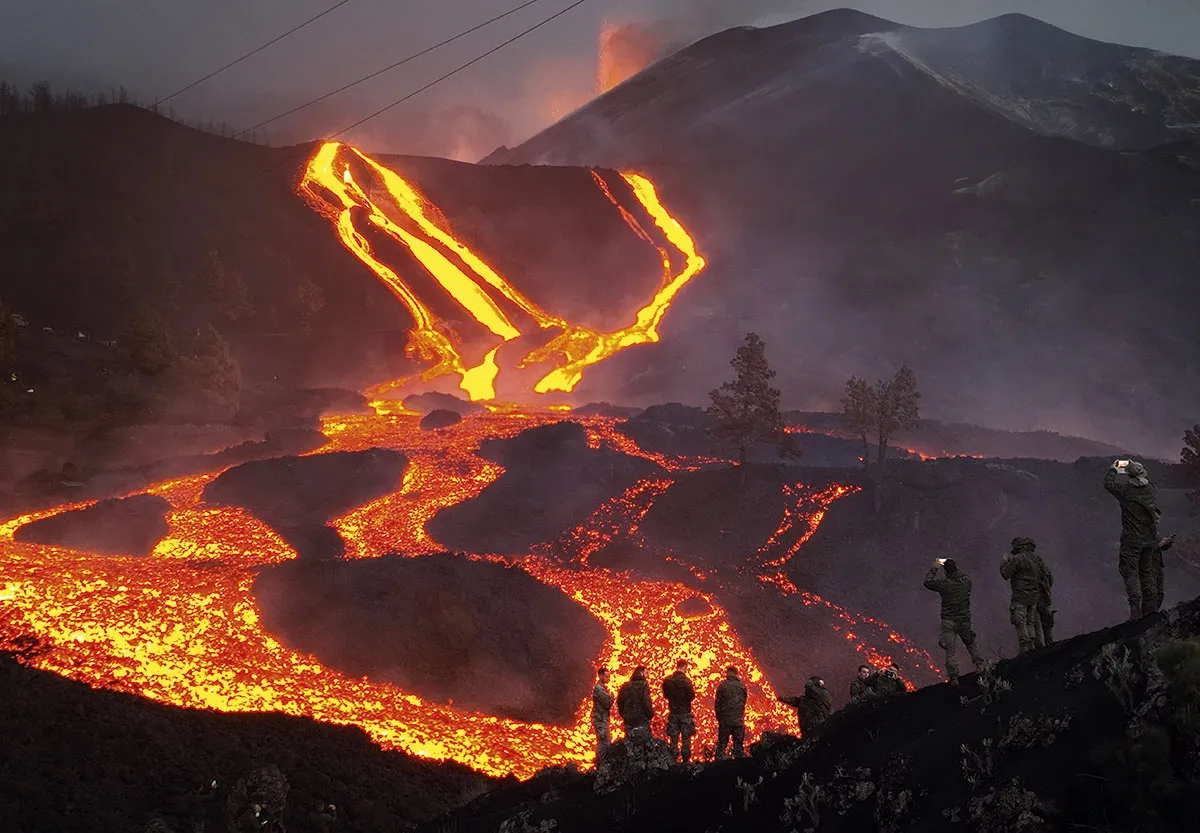
Eruptions at La Palma’s Cumbre Vieja volcano – the most active in the archipelago – tend to occur in clusters separated by a few hundred years, the last one ending in the early 18th Century. Following a couple of hundred years of quiet, the volcano erupted again in 1949 and 1971. Since 2017 it had been restless again, so when magma broke the surface in September 2021, it was not unexpected.
Eruptive activity was a mix of ash explosions, lava fountaining, and the voluminous production of flowing lava. Over the course of three months or so, successive flows destroyed more than 5,000 buildings, including all those making up the town of Todoque, and built a new delta on the island’s western coast. The total cost of the 85-day eruption is estimated at close to €1bn, and its official ending on 25 December came as a much-needed Christmas present for the island’s long-suffering inhabitants.
- This article first appeared in issue 375 of BBC Science Focus Magazine–find out how to subscribe here
Read more about natural disasters:
